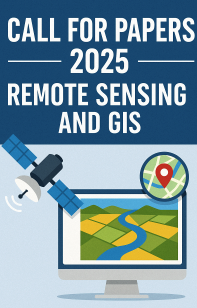Analysis of Melt and Freeze in Shyok Sub-Basin, Indus Basin of Indian Himalaya using Ku Band Scatterometer SCATSAT-1
Research Article- DOI: 10.23953/cloud.ijarsg.467
Abstract
The spatio temporal evaluation of melting snow and ice is important, among other things for studying climatological and hydrological applications. The knowledge of melting and freezing cycles of the seasonal snow cover is essential for water resources management and flood forecasting. Microwave remote sensing is a promising tool to characterise the melt and freeze over a large spatial scale and frequent temporal basis. This study attempts to use the Ku band dual polarization satellite SCATSAT-1 launched by ISRO with a scatterometer on-board with an enhanced spatial resolution of 2.2 Km to analyse the melt and freeze conditions in the Shyok basin, which is a sub-basin of the Indus river basin. The backscatter measurements from SCATSAT are helpful in identifying melt and freeze due to its sensitivity to the water present in the illuminated region. This study aims to adopt an adaptive threshold technique to identify the melt and freeze conditions, where the winter mean and maximum standard deviation and drop in backscatter due to the water content in the snow forms the basis to identify the melt and freeze conditions of the snow covered area. Spatio-temporal variability was observed in melt onset with 18% area under melt onset in the month of June, 2018. Onset in the month of April and May was less in comparison to June. Melt incidence maps were generated for major melt months of April, May and June and were categorised into 5 categories. April observed melt for 1 – 5 days, whereas a part of the study area was in melt condition throughout the month of June. A derived snow cover map was validated with Soumi_NPP derived snow cover with correlation of 0.96, indicating that SCATSAT can be used for snow cover retrieval over Himalayas by observing melt/freeze. Availability of daily SCATSAT data makes it possible to generate daily melt incidence maps.
Downloads
Published
How to Cite
Issue
Section
License
Copyright (c) 2021 International Journal of Advanced Remote Sensing and GIS

This work is licensed under a Creative Commons Attribution 4.0 International License.



